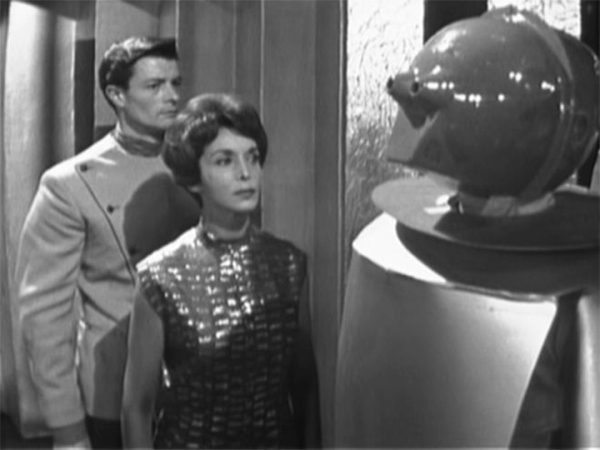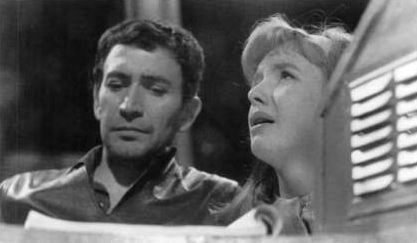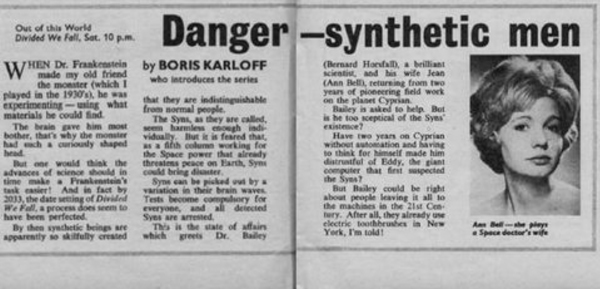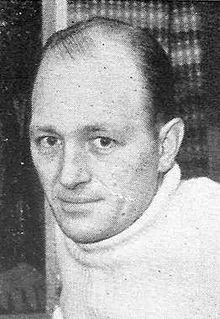[if you’re new to the Journey, read this to see what we’re all about!]

By Ashley R. Pollard
One part of me wants to ask where has the year gone? The other part of me say, what a year this has been for British science fiction. A mere five years ago the idea of spaceship orbiting our world was the stuff of SF. Sputnik changed all that. Then Yuri Gagarin went into space in Vostok. And, from that moment, the world of SF manifested into the minds of all mankind. Not as some improbable fantasy, from starry eyed dreamers, but as reality arisen from technology; born of war, but turned into something greater.
Phew — and what a ride the last five years have been for SF.

I've mentioned in a past article that Britain has Dan Dare, Pilot of the Future. Now we also have Colonel Steve Zodiac of the World Space Patrol. Not the hero of a comic strip, but rather of a children's television show from Anderson Provis Films (APF), which you may all remember from when I talked about their production last year, Supercar.
Gerry and Sylvia Anderson are back with another Supermarionation series, Fireball XL5. Supermarionation is their term to describe puppets that speak using electronic synchronization, and the Andersons have used it to great effect, creating a brand new medium for SF.

So far, I have managed to watch all four episodes of Fireball that have come out, while babysitting my friend's six year-old, who sits entranced by the show. And what a show it is. Seeing my friend's son swept up in the excitement of space has been an eye-opener for me. I'm used to the idea that people don't get SF, unless they're fans. But now I'm seeing the first of a new generation for whom space is the new frontier. This means all the excitement and expectations that go with it are just a normal part of their lives.
So, let me introduce you to the cast of characters. Steve Zodiac I've already mentioned, and he leads a crew of three. Doctor Venus is Fireball XL5's resident space medic for when things go wrong. Professor 'Matt' Mattic is the ship's engineer and scientist. And this being a show set in the future, the final member of the crew is Robert the Robot, invented/made by the aforementioned Professor Mattic.
As an aside, for those interested, Doctor Venus is voiced by Sylvia Anderson, and Robbie's voice is artificially generated by Gerry Anderson using a 'vibrator' mechanism used for those unfortunates who have had throat cancer and have had their larynx removed.

In addition, Fireball XL5 acquires a pet/ship's mascot in the form of Zoonie the Lazoon, who is mildly telepathic and can mimic human speech, which is played for comic relief. Essentially an intelligent talking dog. The young lad I watch over is totally immersed in the adventures that put the crew of Fireball XL5 into peril — a lesson that stories which provoke strong emotional reactions are engrossing.
In addition to the crew of Fireball XL5, there are two other regular supporting characters. The first is Commander Wilbur Zero, Commander-in-Chief of the World Space Patrol, and Lieutenant Ninety, his assistant Space City controller. That's quite a cast of characters to remember, but my friend's son seems to have their names down pat.
Of course intrepid heroes need villains. The first ones we meet are the Subterrains introduced in the opening episode Planet 46, who have launched a 'planetomic' missile at Earth. Boo, hiss. And who we know are fiendish, because when they capture Doctor Venus they launch another missile with her aboard. Fortunately, Zodiac, Robbie and the Professor save the day.

Episode two, The Doomed Planet, starts in medias res with the crew avoiding a rogue planet that has been flung out of its orbit. This planet is now on a collision course with another world, which the crew assumes is uninhabited. It's also the first time we see Zoonie, who is introduced as a pet Doctor Venus has had for three months, which I thought was a rather neat story telling trick. No doubt that Zoonie will get more background later, as the series progresses. The story continues with the reveal that a UFO, from said uninhabited planet, has followed them back to Earth. After pursuing the UFO the crew of Fireball XL5 save the doomed planet by destroying the rogue one that we met at the beginning of the episode. All very exciting.

The next episode, Space Immigrants, has a spaceship called the Mayflower III going to start a new colony that's 236 light years away from Earth. But the planet is occupied by the villainous Lillispatians, who consider humans beings savages, and who intend to enslave the colonists. However, their name should be a clue to one part of the dénouement, which ends with Steve Zodiac using Zoonie to save the day, because to the Lillispatians, the cute Lazoon is a ferocious monster.

The most recent episode, Plant Man from Space, has Professor Matic's old 'friend' Dr. Rootes attempt to take over the Earth with the eponymous plant man. Which as you can imagine has a combination of excitement and comedy to entertain the younger viewer.

While one could criticize some of the dialogue and characterization of Fireball XL5 as, dare I say, wooden, there is a lot to commend about this show. Steve Zodiac may be the hero with a robotic side-kick, but Doctor Venus, even though put upon by some of the supporting male characters, shows that she is a capable doctor and leader too.
There are more episodes to come, and the opening and closing music for Fireball XL5 is rather compelling. The opening credit sequence has a rather nice dirty jazz saxophone, while the end theme song, Fireball sung by Don Spencer will (I have it on good authority) be released as a single. Also, while talking about pop songs, or 'pop-pickers', I must draw your attention to a four piece beat combo called the Beatles, and their catchy new single Love me Do that I heard on the show Pick of the Pops presented by Alan Freeman.

And finally, to finish my piece this month, I would like to mention the introduction of the Ford Mark 1 Cortina, which is quite stunningly pretty. Ford have managed to encapsulate the American penchant for futuristic looking fins into a car that suits British sensibilities. If I had the need to buy a new vehicle, this would be on my list of cars to look at.

So, another exciting month has flown by, which leaves me with only one thing left to say, Happy Thanksgiving to my American friends!


























































